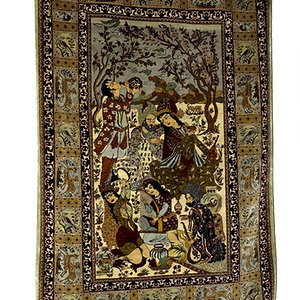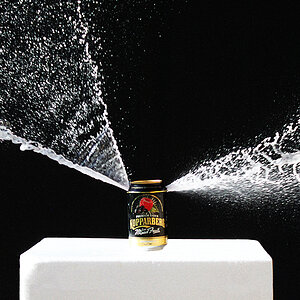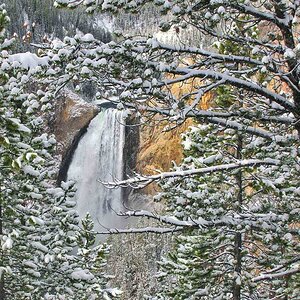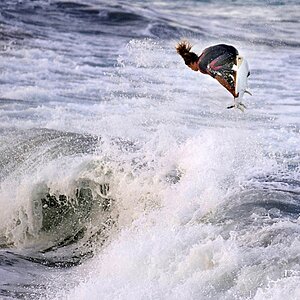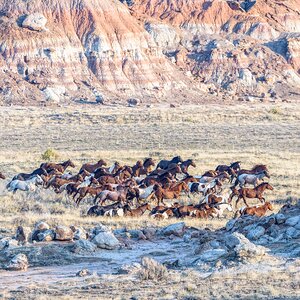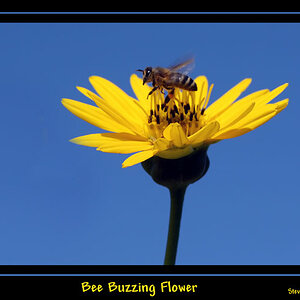First off you can PP jpeg's, just not to the drastic extent that you can Raw files. Secondly, if you have the photographic skills and knowledge to get it right in camera you don't need to do a lot of post processing. Finally no publication wants photos hours or days after the event. If you are shooting for a daily publication they need them right after the event or even during the event to meet deadline. It is not uncommon for me to upload photos at half time, between innings, period end etc. or on occasion even during the event.
Gear has nothing to do with it. It all comes down to photographer knowledge and abilities. I shot for 30 years with film. There were no safety nets, no let the camera do it for you. You had to know your craft. Digital hasn't changed that. All digital has done is let more people slog around trying. Those that truly succeed are the ones that still go out and learn their craft and learn to use the tool not rely on the tool as a crutch.Just one of the places where photographic knowledge and ability comes into play. Not putting yourself into a situation where you have to make drastic corrections in the first place.Yes, you can edit jpeg for sure. And loose tons of image data in the process doing it
Not a problem with jpeg. Done all the time. If you don't want the exposure that the camera is calling for you need to have the knowledge and the ability to know what exposure corrections you need to make to get what you want.One thing is to get right exposure, but other thing is to get the result you want. What if you don't want correct exposure? What if you want to bring up details which would be otherwise lost if you shot it as jpeg? What if you want to fine tweak the exposure, sharpness, saturation etc?
Again, where skill and knowledge comes into play. I use Photoshop as a tool not a crutch. I have plenty of large print hanging in AD's offices, Coaches office, Sporting venues etc and they all are as sharp, crisp and colorful as could want. You could never tell whether they were shot in raw or jpg.Photoshoping jpegs isn't exactly the ideal way, especially if you do larger prints.
That is what sports photography is, Photojournalism.Sure, if you work as a photojournalist, you don't do PP (or only minor tweaks).
The OP didn't ask about photography in general, they asked about SPORTS photography. Sports photography is photojournalism. It is capturing the action as it happens. It is not portraiture with a sports theme, nor is an art to achieve a certain mood or effect. It is the capturing of what is happening at that point in time in a given athletic event.But photography isn't only about getting the correct exposure. It's an art too and if you want to achieve certain mood/effect, you have to post-process, if you like that or not. There are many effects which can't be done with filters, flashes etc. Before, you had to do it in darkroom, now you do the same in PC when converting to jpeg.
Depended on the assignment. I either processed my own or the film was rushed to who I was working for and they processed it for their needs since I might be thousands of miles away from a my lab and they needed it now not in a few days when I got home.During your film days, you processed your images by yourself or used a service, which did it for you?
Navigation
Install the app
How to install the app on iOS
Follow along with the video below to see how to install our site as a web app on your home screen.

Note: This feature currently requires accessing the site using the built-in Safari browser.
More options
You are using an out of date browser. It may not display this or other websites correctly.
You should upgrade or use an alternative browser.
You should upgrade or use an alternative browser.
Sports Photography
- Thread starter nickzou
- Start date
Tomasko
No longer a newbie, moving up!
- Joined
- Oct 17, 2010
- Messages
- 708
- Reaction score
- 76
- Can others edit my Photos
- Photos OK to edit
For you, sports photography can mean photojournalism. But I think that shooting sport doesn't have to mean, that you're shooting for some newspaper or something like that, so you HAVE TO stick with the reality. There are many scenarios, where the photographer could want to alter the "correct" exposure and completely forget about capturing the moment as it was seen. What if someone likes to capture sports, but likes to add something from himself to the image at the same time?
I don't think anybody here ever said, that you have to use photoshop as a crutch or you don't need any skill to take photos. If you would have searched in my previous posts on this forum, you'll find out, that I'm saying basically the same as you do. I don't like over-processed images and by no means I'm telling that we can repair a bad photo thanks to raw. But, PC is a tool and can be used to enhance my or anyone elses work. I like to have the option to play with the image in a non-destructive way with the possibility of using the extra data, that came out of the camera as a raw file.
But maybe you're right. You're the one here with 30 years experience in film photography and I'm no pro photographer by any means, so I guess I just can't understand.
We can let it be that way, I did my best to explain my point of view. If it helps OP, I'm glad, if not, well, can't expect everyone to agree with me. (I wouldn't even want that.. Damn, the world would be so boring then )
)
I don't think anybody here ever said, that you have to use photoshop as a crutch or you don't need any skill to take photos. If you would have searched in my previous posts on this forum, you'll find out, that I'm saying basically the same as you do. I don't like over-processed images and by no means I'm telling that we can repair a bad photo thanks to raw. But, PC is a tool and can be used to enhance my or anyone elses work. I like to have the option to play with the image in a non-destructive way with the possibility of using the extra data, that came out of the camera as a raw file.
But maybe you're right. You're the one here with 30 years experience in film photography and I'm no pro photographer by any means, so I guess I just can't understand.
We can let it be that way, I did my best to explain my point of view. If it helps OP, I'm glad, if not, well, can't expect everyone to agree with me. (I wouldn't even want that.. Damn, the world would be so boring then
jasonphoto
TPF Noob!
- Joined
- Aug 2, 2011
- Messages
- 44
- Reaction score
- 1
- Can others edit my Photos
- Photos NOT OK to edit
i usually shoot jpeg,,its nice,,
sierramister
TPF Noob!
- Joined
- Jan 9, 2011
- Messages
- 248
- Reaction score
- 19
- Location
- TENNESSEE
- Website
- a-sullivan.com
- Can others edit my Photos
- Photos NOT OK to edit
I think the most important point is being missed here. The advantage to shooting JPEG for a beginner is buffer size. If you have a Kingston or PNY Class 4 SD card and are shooting a D3000 or D5000, your buffer is going to fill up pretty quickly in RAW. Quickly as in 4-5 frames, which always happens to be as the QB just misses getting sacked as he throws it to the receiver, who breaks a tackle, and you're stuck waiting for your buffer. Shoot JPEG and the problem is solved!
For me, the difference is entirely in my presentation outlet. When I shoot for the newspaper, I shoot JPEG because I usually don't have the time to edit them before submitting.
Further, I would advise all amateur sports shooters (and take this with a grain of salt because I'm an amateur) to practice selective shots. Limit yourself to 2 shots per play (although be lenient, because more than 2 major events can occur in 1 play). It's hard at first, but you get the hang of it quickly. It makes it easier to justify shooting in RAW when you leave a game with 50 images.
For me, the difference is entirely in my presentation outlet. When I shoot for the newspaper, I shoot JPEG because I usually don't have the time to edit them before submitting.
Further, I would advise all amateur sports shooters (and take this with a grain of salt because I'm an amateur) to practice selective shots. Limit yourself to 2 shots per play (although be lenient, because more than 2 major events can occur in 1 play). It's hard at first, but you get the hang of it quickly. It makes it easier to justify shooting in RAW when you leave a game with 50 images.
I think the most important point is being missed here. The advantage to shooting JPEG for a beginner is buffer size. If you have a Kingston or PNY Class 4 SD card and are shooting a D3000 or D5000, your buffer is going to fill up pretty quickly in RAW. Quickly as in 4-5 frames, which always happens to be as the QB just misses getting sacked as he throws it to the receiver, who breaks a tackle, and you're stuck waiting for your buffer. Shoot JPEG and the problem is solved!
For me, the difference is entirely in my presentation outlet. When I shoot for the newspaper, I shoot JPEG because I usually don't have the time to edit them before submitting.
Further, I would advise all amateur sports shooters (and take this with a grain of salt because I'm an amateur) to practice selective shots. Limit yourself to 2 shots per play (although be lenient, because more than 2 major events can occur in 1 play). It's hard at first, but you get the hang of it quickly. It makes it easier to justify shooting in RAW when you leave a game with 50 images.
:thumbup: +1 About the only time I shoot multiple sequential shots is a fumble or a sliding play at the plate. A lateral fumble can result in a great sequence of shots if you keep the ball in focus.
Similar threads
- Replies
- 4
- Views
- 4K
- Replies
- 66
- Views
- 5K

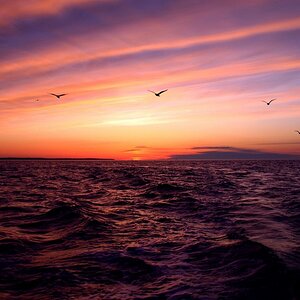
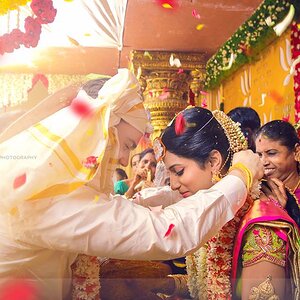
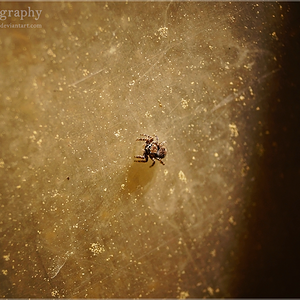
![[No title]](/data/xfmg/thumbnail/37/37091-18fa97e6ac84c47479921254caf164c3.jpg?1619737881)
![[No title]](/data/xfmg/thumbnail/32/32808-9d1f657a1903d3bdbd67ea830397d62c.jpg?1619735668)
